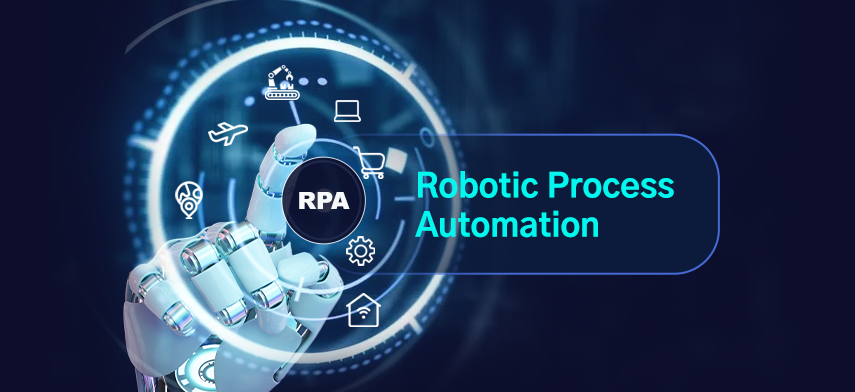 DA 50+ Guest Posts – Get Featured on Real Authority Blogs!
DA 50+ Guest Posts – Get Featured on Real Authority Blogs!
Semiconductor Material Market: AI-Driven Advancements and Predictive Modeling
Written by Maya » Updated on: June 17th, 2025

Introduction
The Semiconductor Material Market is witnessing a transformative shift driven by artificial intelligence (AI) and machine learning (ML). These technologies are playing a crucial role in discovering next-generation semiconductor materials and improving manufacturing processes. As the demand for high-performance computing, artificial intelligence, and the Internet of Things (IoT) rises, the need for advanced semiconductor materials has never been greater. AI-driven material discovery and predictive modeling are revolutionizing the industry by enhancing efficiency, reducing costs, and improving wafer quality. This article explores how AI and ML are shaping the semiconductor material market and their impact on predictive modeling for defect-free semiconductor wafers.
AI-Driven Material Discovery in Semiconductor Manufacturing
The development of new semiconductor materials is a complex and time-consuming process. Traditional methods rely heavily on trial-and-error experimentation, requiring years of research and testing. However, AI and ML are now streamlining this process by leveraging vast datasets and predictive algorithms to accelerate material discovery.
1. Accelerating the Discovery of Next-Generation Semiconductor Materials
AI-driven material discovery utilizes machine learning models to analyze and predict the properties of potential semiconductor materials. These models are trained on extensive datasets containing information about existing materials, their properties, and their applications. By using AI, researchers can identify new materials that exhibit desirable electrical, thermal, and mechanical properties for semiconductor applications.
• High-Throughput Screening: AI algorithms can analyze thousands of material combinations in a fraction of the time required by traditional methods.
• Computational Modeling: Advanced simulation techniques allow scientists to predict how materials will perform under different conditions before physical testing.
• Automated Experimental Design: AI-powered systems can suggest optimal experimental setups, reducing resource wastage and speeding up development.
One key breakthrough enabled by AI is the discovery of two-dimensional (2D) materials beyond graphene, such as transition metal dichalcogenides (TMDs), which offer superior electronic properties for next-generation semiconductor devices.
2. AI-Powered Quantum Computing Materials
The semiconductor industry is also leveraging AI to explore materials suitable for quantum computing. Quantum computers require unique semiconductor materials capable of maintaining quantum coherence and reducing energy loss. AI algorithms are helping researchers identify novel materials, such as topological insulators and high-purity silicon variants, to improve qubit stability and computational efficiency.
Predictive Modeling for Defect-Free Semiconductor Wafers
The semiconductor manufacturing process is highly complex, involving multiple steps such as deposition, etching, and doping. Any defects in the wafer can significantly impact device performance, leading to costly losses. AI-driven predictive modeling is transforming semiconductor manufacturing by ensuring defect-free wafers through advanced analytics and real-time monitoring.
1. AI-Enabled Defect Detection and Prevention
AI-powered image recognition and deep learning models are now being used to detect microscopic defects in semiconductor wafers. These models analyze wafer images and identify defects that might be undetectable through conventional inspection techniques. By implementing AI-based quality control systems, manufacturers can achieve:
• Higher Yield Rates: Early defect detection reduces material waste and increases the number of usable wafers.
• Real-Time Monitoring: AI systems continuously monitor production lines to detect abnormalities and suggest corrective actions.
• Root Cause Analysis: By analyzing historical defect data, AI models can identify recurring issues and provide recommendations for process optimization.
2. Predictive Maintenance in Semiconductor Fabrication
Predictive modeling also plays a critical role in equipment maintenance within semiconductor fabrication plants. AI-driven predictive maintenance systems analyze sensor data to forecast potential equipment failures before they occur. This approach minimizes unplanned downtime, reduces maintenance costs, and ensures a smooth manufacturing process.
• Anomaly Detection: AI systems can detect subtle deviations in machine performance, signaling early warning signs of equipment failure.
• Optimized Maintenance Schedules: Instead of following fixed maintenance schedules, predictive models determine the best time for servicing based on real-time equipment performance.
• Reduction in Production Delays: Preventing machine breakdowns ensures that semiconductor production remains uninterrupted, improving overall efficiency.
3. AI-Based Process Optimization for Uniform Wafer Quality
AI-driven process optimization is enhancing wafer uniformity by continuously adjusting manufacturing parameters. By analyzing historical production data, AI models can fine-tune variables such as temperature, pressure, and chemical concentrations to achieve consistent wafer quality. This level of precision is essential for producing high-performance semiconductor devices used in applications such as 5G communication, autonomous vehicles, and high-performance computing.
Market Growth and Future Outlook
The semiconductor material market is expected to grow significantly in the coming years, driven by advancements in AI-driven material discovery and predictive modeling, with AI-powered technologies playing a crucial role in this expansion.
Key factors influencing market growth include:
• Increasing demand for AI and IoT devices: The proliferation of AI-driven applications and IoT-connected devices is fueling the need for advanced semiconductor materials.
• Advancements in chip manufacturing: The development of smaller, more powerful chips requires high-quality semiconductor materials.
• Sustainability initiatives: AI is also being used to develop environmentally friendly semiconductor materials with lower energy consumption and reduced waste.
Conclusion
AI-driven innovations are revolutionizing the semiconductor material market by accelerating material discovery and enhancing manufacturing processes. Machine learning models are enabling researchers to identify next-generation semiconductor materials faster, while predictive modeling is improving wafer quality and manufacturing efficiency. As AI continues to evolve, its role in semiconductor fabrication will become even more critical, paving the way for more advanced, energy-efficient, and high-performance semiconductor devices. Companies investing in AI-powered solutions will gain a competitive edge in this rapidly growing market, driving the next wave of semiconductor advancements.
Note: IndiBlogHub features both user-submitted and editorial content. We do not verify third-party contributions. Read our Disclaimer and Privacy Policyfor details.
Copyright © 2019-2025 IndiBlogHub.com. All rights reserved. Hosted on DigitalOcean for fast, reliable performance.















